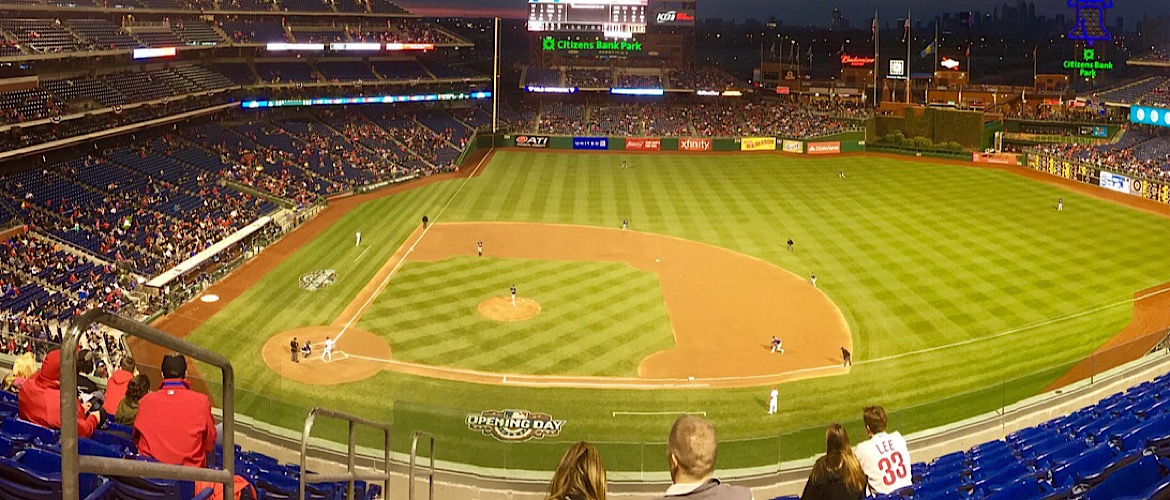No time to read? Listen to the podcast.
When I was a kid I asked my father why the Yankees played the National Anthem before every game. He told me it was the law.
I also believed him when he told me cough syrup tasted like cherry Coke.
Not only is there no law requiring the playing of the National Anthem before sporting events, sports embraced the Star-Spangled Banner long before the country even had a national anthem. And that’s because, somewhere in the distant past, both sports and the Star-Spangled Banner had the same parent.
War.
It took baseball, and Babe Ruth, to seal the bond between sports and the Star-Spangled Banner.
The Star-Spangled Banner was born out of war and its four original verses contain references to, or taunts about, war. When mentioned as a candidate for a national anthem throughout the 1800s and early 1900s, the Star-Spangled Banner had an edge over tamer tunes, such as Yankee Doodle, and hymnals such as God Bless America, America, the Beautiful, Columbia, the Gem of the Ocean, and Hail, Columbia.
(Not only were these songs not about war, they were all far easier to sing than the Star Spangled Banner. However, we are a country of strange choices, such as a father naming his son Edsel.)
The military tapped into the Star-Spangled Banner‘s patriotic roots during the Civil War when it promulgated regulations about how soldiers should behave during its playing. With sports and the military sharing a common structure—one built on team work, discipline, loyalty, and a chain of command—it should come as no surprise (except, perhaps, to my father) that sports had an affinity for the song.
There are newspaper reports of the Star-Spangled Banner being played at important social, as well as sporting, events as early as the mid-1800s. On these occasions the song was often performed as part of a medley of patriotic music.
It took baseball, and Babe Ruth, to seal the bond between sports and the song. Actually, it took a dull first game of the 1918 World Series, which my father might not have remembered since he was seven at the time. And a basketball fan.
Ruth and the Boston Red Sox were holding the Chicago Cubs scoreless that day (what a surprise), and a pall had descended over fans in Chicago. According to The New York Times, before the bottom of the seventh inning, “The band halted the proceedings by playing The Star Spangled Banner.” The Times reporter indicated the significance of that moment by also reporting that a fellow named Klem was umpiring at second base.
But another Times reporter, who convinced his editor he was at the same game, wrote a story from a different point of view. He described how, when the band struck up the Star Spangled Banner, Boston’s third-baseman, Fred Thomas, who was on leave from the Navy, snapped to attention, “…with his eyes set on the flag fluttering.” Then, at the end of the song, “…the onlookers exploded into thunderous applause and rent the air with a cheer that marked the highest point of the day’s enthusiasm.”
(This is the way people wrote when they didn’t have pictures to post on the internet.)
Major league baseball, knowing a crowd-pleaser when it heard one, quickly made the playing of the Star-Spangled Banner a regular event at World Series games. But only the World Series.
Blame that on John Ambrose Fleming.
He perfected the vacuum tube, the device that allowed the sound from radios and phonographs to be amplified so it could fill a room.
Or a stadium.
Before he did, team owners had to hire bands to perform the Star-Spangled Banner, and bands cut into profits. Once the vacuum tube came into general use, owners could use public address systems and recorded versions of the song. Suddenly, it was played before every game.
From baseball, the playing of the Star-Spangled Banner drifted into football and other sports, all wanting to adopt the model of America’s National Pastime.
On March 3, 1931, President Herbert Hoover signed a bill, 20 years in the making, naming the Star-Spangled Banner as our National Anthem. Overnight, sporting events went from playing the Star-Spangled Banner to playing our National Anthem without changing a note.
But all events associated with the National Anthem—rising, taking off one’s hat, even the playing of it, itself—have their roots in 1800s military tradition, not law.
And, for the record, cough syrup does not taste like cherry Coke. Ever.
Start your Sunday with a laugh. Read the Sunday Funnies, fresh humor from The Out Of My Mind Blog. Subscribe now and you'll never miss a post.
Mind Doodle…
Francis Scott Key, who wrote the words for the Star-Spangled Banner, was not a composer nor lyricist. Nor was he a poet. He was a lawyer. That explains the four verses but not the lack of fine print.

Funny stuff and yet true… must be in the telling or maybe even in the reading. I have to get a set of speakers for my new “MacBook plugged into a big screen monitor system” so that I can start LISTENING to your podcasts especially your wife’s readings.
Hi Nick…
I don’t have first-hand experience with this, but I’m told if you play the podcasts through a big-screen monitor system with full-fidelity speakers your neighbors will chip in and buy you a house somewhere else.
Start looking at those real estate listings. And dream big.
— jay